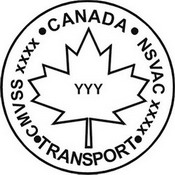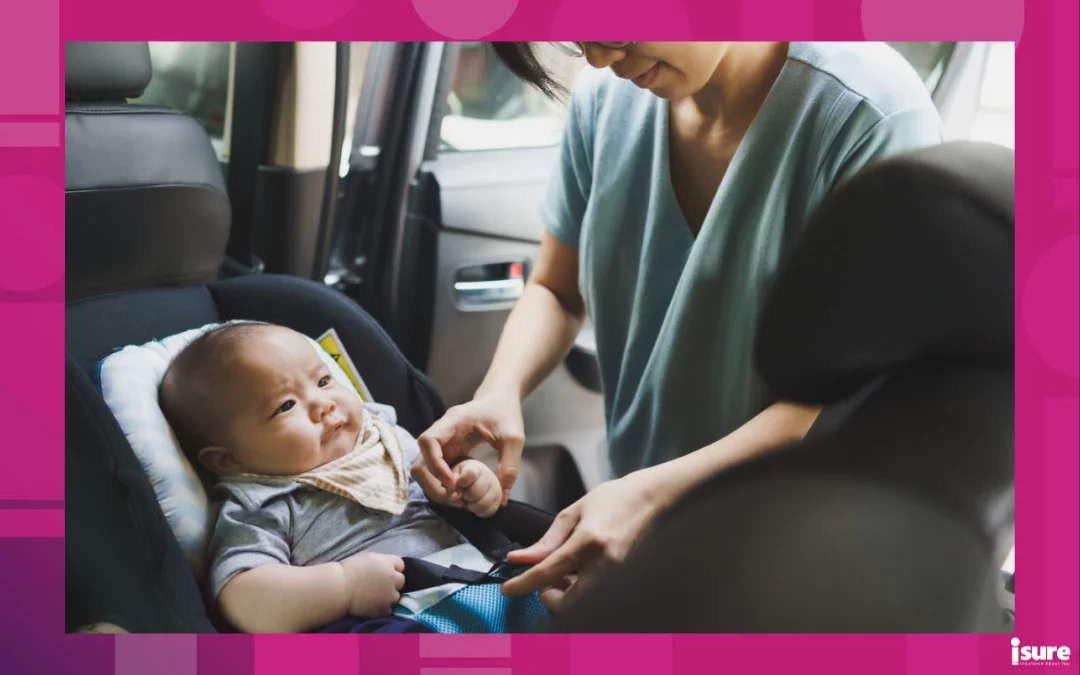What are the three stages of car seats?
When it comes to figuring out how your child should sit in your vehicle, you can divide it into three stages. Your child can graduate to the next stage when they reach a certain weight. Understanding each stage of protection for transporting your child is important when it comes to taking them as safely as possible. There are three established styles, or stages, of car restraints for kids:
Stage 1: Rear-facing car seat
This is considered the safest position for young kids as it provides necessary support for their heads and necks. This type of support is crucial when it comes to younger children when you have to hit a sudden stop. It’s also legally required across Canada for all children, from birth until reaching a weight of at least 20 lbs. Most jurisdictions have even more stringent requirements. Once your child reaches a weight of 20 lbs, your child can graduate to the second stage, which is a forward-facing seat
Stage 2: Forward-facing seat
The child is now seated in the same direction as the rest of the passengers. This type of car seat is equipped with a five-point harness. The minimum requirement for children to use a forward-facing child car seat when they weigh between 9kg to 18kg (20lbs – 40lbs). This type of seat must always be installed with the rear tether strap in use so that it doesn’t lift away from the car’s seat back in a crash. Once your child reaches 40lbs, they can graduate to a booster seat!
Stage 3: Booster seat
A booster seat is similar to a car seat, however, it is used with the car’s built-in seat belt. It’s recommended that you put this off for as long as possible by waiting until your child is at least 40 lbs. This is because the seat is no longer doing any of the work to keep your child safe at this stage. Rather, the booster is to ensure that the seat belt follows the correct path and fits your child properly. Maturity is important when it comes to using a booster seat. This is because a child must be able to sit properly for the whole car ride, even if they fall asleep.
Proper fit for a booster seat
- The shoulder strap needs to sit squarely on the child’s shoulder, not climbing up onto the neck.
- The lap belt should fall low across the hips, not higher onto the torso.
- Most booster seats require your child to be consistently 40 lbs, 40″ in height, and a minimum of four years old.
- It also requires a proper belt fit, which may not happen until the child is larger.
For best practice, in addition to the car seat laws in Ontario, your child needs to be old enough to be responsible for their safety, since they need to sit in the correct position at all times. This includes while sleeping (generally ages 6+).
Benefits of a booster seat
A booster seat raises your child so that the adult seat belt works more effectively by properly positioning the seat belt across the child’s body. Booster seats protect them against serious injury 3 ½ times better than seat belts alone. A lap and shoulder combination belt must be used with all booster seats. Your child’s head must be supported by the top of the booster seat, vehicle seat, or headrest. The shoulder strap needs to be centered across the child’s collarbone and the lap portion of the seat belt needs to be low on the child’s hips touching the tops of their thighs. 30% of kids in booster seats do not meet the minimum 40lb requirement. It is crucial that this requirement is met or else your seatbelt will not be beneficial! Ontario car seat laws require children to use a booster seat:
- If the child is in between the weights of 18kg to 36kg (40lb-80lb),
- When standing less than 145cm tall (4’9”), and
- Is under the age of eight years old;
When can my child graduate with a seat belt?
Your child can graduate from a car seat to using a seat belt on their own when one of the following conditions are met. Keep in mind, that these are only minimum guidelines, and it is up to you and your child’s discretion on when you both feel comfortable transitioning to using only the seat belt:
- Your child turns eight-years-old, OR
- If your child weighs 80 lbs, OR
- He/she is 145cm (4’9”) tall or taller
What is the five-step test?
The best practice is to keep your child in a booster until the seat belt fits well without it. This generally occurs once a child is 4’9” tall and around age 11.
The ‘Five-Step Test’ is an indicator that your child is ready for the belt-only. The test should be done in every seating position of each car, as it can be different.
- Can your child sit back in the vehicle seat?
- Do your child’s knees bend easily at the edge of the vehicle seat?
- Can the shoulder belt lay flat against the collarbone?
- Does the lap belt sit low on the upper thighs?
- Can the child remain seated for the whole trip, even while sleeping?
Learn more about when to make the switch here.
Tips to keep your kids safe
To make sure that your child is protected while traveling in a motor vehicle, kidsplaysafe.ca has compiled a few tips to help you:
- Use the right car seat for the child’s height, weight, and development.
- Always follow the manufacturer’s instructions and read your vehicle owner’s manual for correct child car seat installation and use.
- Be sure to secure the child correctly. Make sure harness straps are flat and snug. Always use a tether strap with a forward-facing child car seat.
- Keep children away from all active front airbags. Children 12 years of age and under are safest in the back seat.
- Every child car seat and booster seat sold in Canada has an expiry or useful life date on it, and should not be used if it has passed the date.
Final thoughts on Ontario car seat laws
While transitioning from car set to booster to seat belt are huge milestone in your child’s development, don’t rush them into the next stage too quickly. Not only is it dangerous, but if caught driving with your child when they are not in a proper seat for their weight can result in a fine of up to $1,000. Adhere to recommendations regarding height, weight, and behaviour models to keep your child the safest they can be. Also, when purchasing your car seat, look for the label with the national safety mark on it.

This means that the seat and manufacturer meet the government guidelines for safety. While you do not need to register the individual seat with a governing body, you should make sure that you register with the manufacturer so that you are notified of any recalls.
Remember, your child’s safety is never something you want to gamble on. If you’re in the market for a car seat or booster seat, why not check out our articles on some of the best in the market for 2024? While you’re at it, consider whether or not your car insurance is still meeting your needs. If not, why not check out isure? We have some of the best premiums on the market as well as customer service you can always count on! Contact us or request a quote today!




